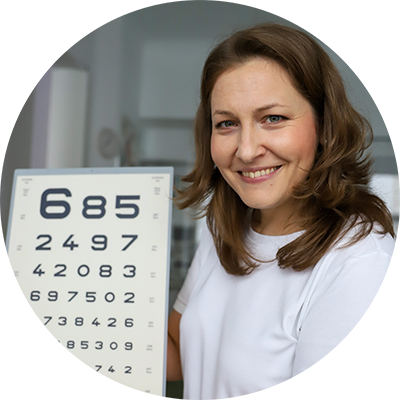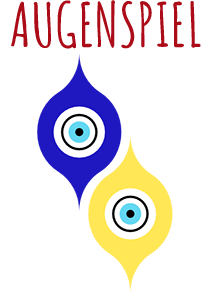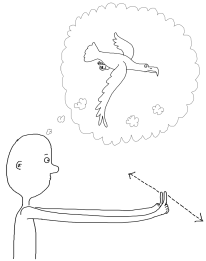
WELCOME!
For me, the focus is on my young patients – and the time for them and the consulting service for their parents is important to me. I playfully involve both children and parents in the diagnosis and the development of a therapeutic strategy.
Even in the waiting area there are visual symbols and playful eye tests, so that the important initial findings about the children’s visual behaviour can be made in a relaxed atmosphere.
Prudent clarification and treatment
Paediatric ophthalmology is a relatively young specialty. It deals with congenital eye diseases, the specific eye problems in premature babies, inherited eye diseases and their genetic clarification and also optical defects.
Visual impairments can lead to functional problems such as reading or spelling disorders, dyslexia or even asthenopic complaints. That is why I attach great value in my work to interdisciplinary collaboration with experts from other disciplines such as paediatrics, human genetics, psychology, neurology, pedagogy and early childhood education.
Early detection is crucial for healthy development
Since the development of visual pathways in the brain is formed during the first years of life, early detection of hereditary eye diseases is crucial. The earlier a disorder occurs, the more consequences it has for the visual development of a child.
Eye defects do not grow out!
In order to be able to exclude from the outside invisible changes in the inside of the eye, the eyes must be examined closely even in the newborn. Disorders that result in a disturbance of the light incidence on the retina (such as cataracts or corneal opacities) must be surgically corrected as soon as possible.
Even in children whose visual development is not as expected in weeks 6-8 of life and who develop a “shivering” (= nystagmus) or strabismus, precise clarification and treatment respectively must begin without delay.
We have created a communicative and playful environment so that children and parents feel completely at home with us.
When should your child see an ophthalmologist?


In weeks 6-8 of life
if visual development does not start as expected.

IMMEDIATELY
for all visible abnormalities of the eyes. These include tingling, strabismus, corneal opacities, gray-whitish pupils, large eyes that shun the light and eyelid changes such as hanging eyelids. Or if you are not sure about anything at all!

At the age of 6-12 months
– if there is strabismus, nearsightedness or astigmatism or another hereditary eye disease in the immediate family (father, mother or sibling)
– in premature babies
– in children with general developmental delay


At the age of 2 years
Generally with all children (mother-child adjustment examination) – even if there is no noticeable disorder. The investigation is used in particular for the early detection of a “mini-squint” (which leads to weakened vision), an optical refractive error or a unilateral eye disease.

In preschool age 4-6 years
for general clarification and in the context of clarification regarding legasthenia und dyscalculia.




